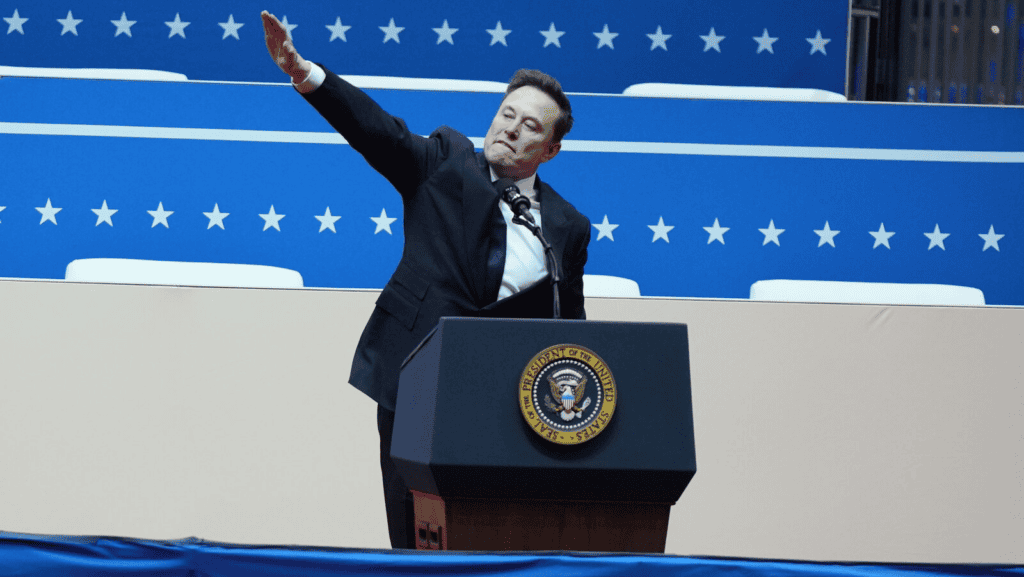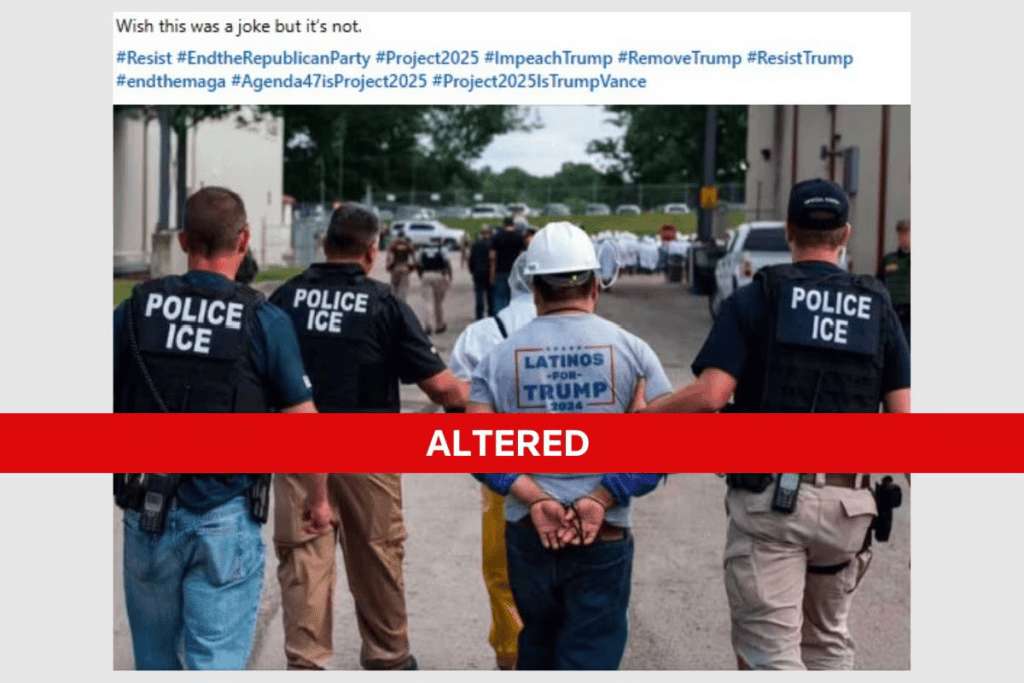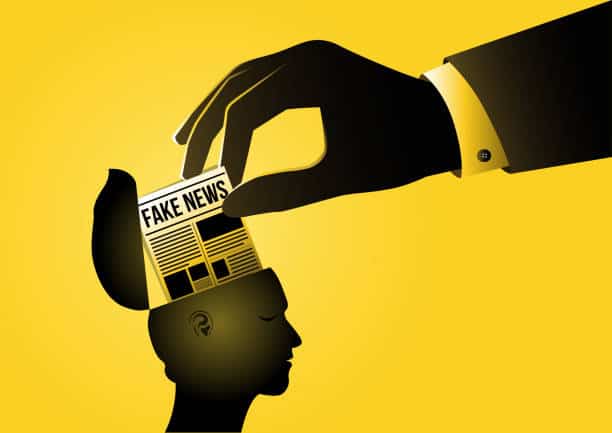January 20, 2025 – Trump’s Inauguration and the ‘Nazi Salute’ Controversy
Claim: Elon Musk made a Nazi salute at Trump’s inauguration rally, signaling far-right support.
The Truth: A selectively edited video omitted Musk’s full remarks, where he stated, “My heart goes out to you,” while making the gesture. While extremist groups did praise the moment, spreading propoganda, there is no evidence from Musk that his action was intentional.
Trump Pardons Jan. 6 Rioters, Sparking Hitler Comparison
Claim:
Hitler pardoned 8,000 Nazis on his first day in office, just as Trump pardoned Jan. 6 rioters.
The Truth:
Historical records show no such pardon on Hitler’s first day. A decree issued two months later granted immunity to Nazi supporters, but the claim distorts the timeline.
Biden ‘Pardoned 33 Murderers’ Claim Goes Viral
Claim:
Biden pardoned 33 murderers before leaving office.
The Truth:
Biden commuted 37 federal death row sentences to life without parole, but this did not absolve them of their crimes.
False ICE Raid Image Featuring ‘Latinos for Trump’
Claim:
A detained man was wearing a “Latinos for Trump 2024” T-shirt, showing Latino support for Trump despite increased deportations.
The Truth:
Reuters confirmed the image was altered. The original, taken in 2018, contained no text on the man’s shirt.
Immigration Misinformation from Trump’s Press Secretary
Claim:
All undocumented immigrants are criminals.
The Truth:
Entering the U.S. without authorization is a misdemeanor, but overstaying a visa is a civil infraction, not a criminal offense. Data shows immigrants, including undocumented ones, commit crimes at lower rates than native-born citizens.
Trump ‘Fired 3,000 Air Traffic Controllers’ After Fatal Collision?
Claim:
Trump fired 3,000 air traffic controllers after taking office, weakening aviation safety and causing a deadly midair collision.
The Truth:
No evidence supports this claim. While Trump revoked DEI hiring policies at the FAA, there were no mass firings. Trump did, however, blame the Fatal Collision on DEI.
The Bigger Picture: What This Misinformation Tells Us About 2025
The rapid spread of misinformation in 2025 isn’t just about individual false claims. It reveals a much larger, more dangerous trend in the way information is weaponized to manipulate public opinion. This timeline of fake news exposes several key themes that define the current media and political landscape.
1. Misinformation as a Political Tool
Many of these falsehoods, whether it is President Trump’s supposed firing of air traffic controllers, or Biden’s “pardons,” these claims originate from political figures or their supporters. These claims aren’t just organic misunderstandings; they are strategic narratives designed to shape public perception, create outrage, and rally specific voter bases. The repetition of these claims by high-profile figures gives them legitimacy, even when fact-checkers swiftly debunk them.
2. The Role of Social Media and Selective Editing
Several of these misinformation events gained traction through manipulated media, whether it was the cropped video of Elon Musk’s hand gesture or the altered ICE raid photo. This shows how modern misinformation thrives on selective editing, AI-generated alterations, and decontextualized content. The speed at which these stories spread on platforms like X (formerly Twitter), Facebook, and Telegram further complicates efforts to correct them before they take root.


3. Historical Distortions and False Parallels
The claim that Trump’s Jan. 6 pardons mirrored Hitler’s actions in 1933 is an example of how history is often weaponized in misinformation campaigns. Historical comparisons, when manipulated, can mislead people into drawing exaggerated or false equivalencies that serve an agenda rather than educate.
4. The Undermining of Trust in Institutions
These false claims collectively work to erode trust in government agencies, the media, and even the justice system. For example, Trump’s claim that Biden pardoned “murderers” creates fear and distrust in the criminal justice system, while the ICE raid image manipulation fuels skepticism about media credibility. When misinformation spreads unchecked, it fosters a climate in which people distrust even verifiable facts.
5. The Future of Misinformation: AI, Deepfakes, and Beyond
This timeline also highlights an increasing reliance on altered media, a trend that will likely escalate with the rise of AI-generated deepfakes and synthetic news. As technology advances, distinguishing between reality and fiction will become even more challenging. Thisshows the growing need for digital literacy, stronger fact-checking mechanisms, and greater accountability from social media platforms that enable misinformation to thrive.
References
Christensen, Laerke. “Unpacking Trump Admin’s Claim That ‘All’ Undocumented Immigrants Are Criminals.” Snopes, Jan. 31, 2025. Link
Deng, Grace. “Biden Didn’t Pardon Murderers on Death Row. He Gave Them Life in Prison.” Snopes, Jan. 28, 2025. Link
Jaffe, Alan. “Trump Administration Makes Unsupported Claim About $50 Million for Condoms to Gaza.” FactCheck.org, Jan. 30, 2025. Link
Kasprak, Alex. “Snopes Posts Claiming Hitler Pardoned 8,000 Nazis the Day He Became Chancellor Aren’t Entirely Accurate.” Snopes, Jan. 29, 2025. Link
Liles, Jordan. “Did Musk Give ‘Nazi Salute’ at Trump’s 2025 Inauguration Rally? Here’s What We Know.” Snopes, Jan. 20, 2025. Link
PerryCook, Taija. “No Evidence Trump Fired 3,000 Air Traffic Controllers.” Snopes, Jan. 30, 2025. Link
Reuters Fact Check. “Picture of Man Detained in Immigration Raid Was Altered to Say ‘Latinos for Trump’.” Reuters, Jan. 30, 2025. Link


